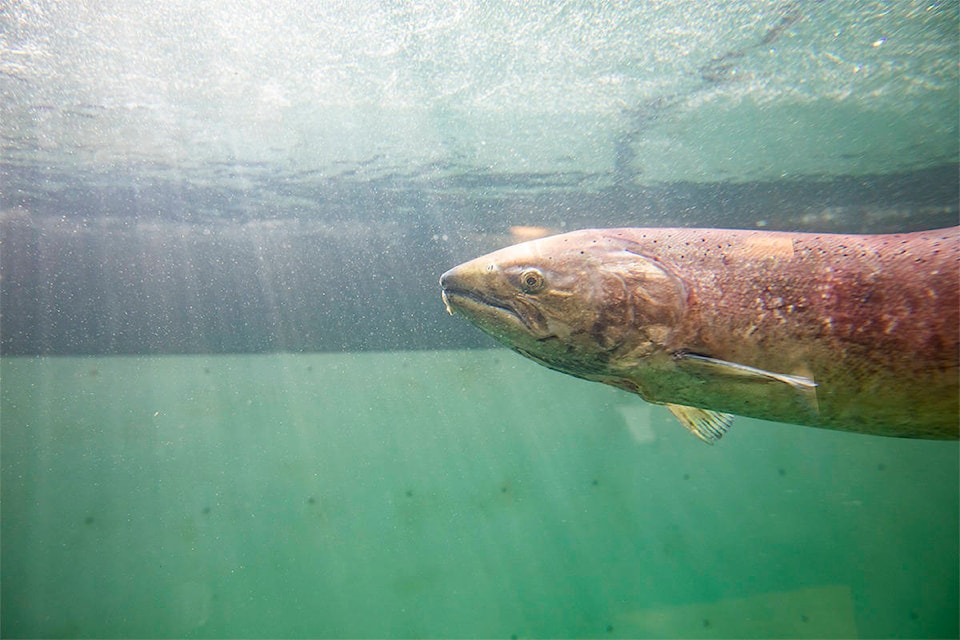The Whitehorse fish ladder is seeing a slower start to the season than usual, with fewer fish than average having passed through at this point compared to previous years.
As of mid-day on Aug. 15, 37 salmon had been counted at the fish ladder.
That’s compared to the past five years, where the total number of salmon was already well into the triple, if not quadruple, digits.
The number of salmon arriving daily so far has also only been in single digits, whereas multiple groups of fish into the double and triple digits had already been recorded by this date in years past.
Whitehorse fish ladder manager Brittany Key said in an interview Aug. 15 that she attributes the delay to two factors.
“So for the low numbers here, one of the main causes is the warmer water … That’s messing up their process of coming up quite a bit and that’s also making the run later. What’s also making the run later is lower water,” she said.
However, things appear to be picking up.
“We had out first fish July 30 and so after that we had a few days where we didn’t have any fish, but right now we’re finally starting to get into our peak point where every like 15 minutes or so a salmon comes in,” Key said, adding that the ladder is expecting between 200 to 300 fish in total to pass through this season.
“We just hope that we’re going to get a little bit more than the expected run now, hopefully it’ll be a better year than we think.”
Steve Smith, Fisheries and Oceans Canada’s manager of treaties and fisheries for the Yukon River, said the department has noticed a delay in the run “across the board … throughout the river.”
However, he said it was still too early to identify the reasons behind the delay, or to actually know the run’s true timing until the run is over.
“I’m not sure lower water levels play a role but you know, (there’s) definitely been higher temperatures than average or what we’ve seen in the past, and we do know that temperatures … affect fish behaviour and productivity,” he said. “But it’s too early to speculate or draw conclusions as to the exact effect that these water temperatures have on this particular stock of fish.”
Data shows 45,560 Chinook had been counted at the Eagle sonar, located near the Alaska-Yukon border as of Aug. 14, with only about a thousand more fish expected to cross over before the entire run is in Canadian water.
That number just slightly surpasses the lower end of the target escapement goal of 42,500 to 55,000 fish.
Chinook on the Upper Porcupine River appear to be bucking the delay trend — as of Aug. 13, the sonar there had counted 4,337 fish, which is already higher than the season totals for 2017 and 2018 (1,132 and 3,414, respectively).
Contact Jackie Hong at jackie.hong@yukon-news.com
